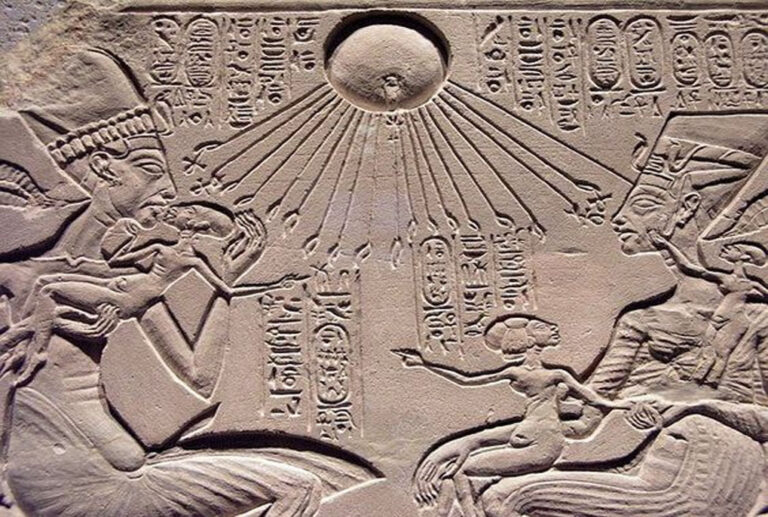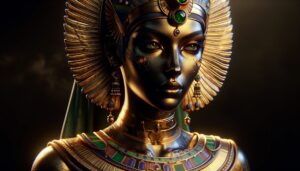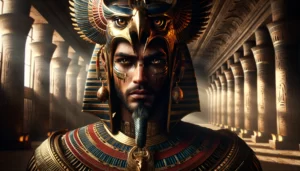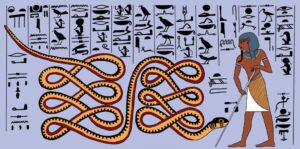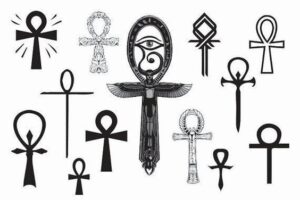Table of Contents
Who is Aten
Aten, in the context of ancient Egyptian religion, refers to the solar disc, representing the physical sun. Akhenaten, the pharaoh of the 18th Dynasty, introduced Aten as the central and singular deity, promoting a form of monotheism known as Atenism. This religious shift aimed to replace the traditional polytheistic worship of various gods with the exclusive veneration of Aten. The term “Aten” itself is derived from the Egyptian word for the sun disk.
Akhenaten’s radical religious reforms faced resistance, and his identification as the “Heretic Pharaoh” reflects the opposition to his departure from established religious traditions. Despite this, Atenism had a significant but brief impact on Egyptian society during Akhenaten’s rule. After his death, the succeeding pharaohs reverted to the traditional polytheistic beliefs, and Akhenaten’s name was often omitted from official records in an attempt to erase his controversial legacy.
Source
The information provided about Aten and Akhenaten is based on general knowledge of ancient Egyptian history and religion. However, if you’re looking for more detailed and scholarly information, I recommend consulting academic sources and books on ancient Egyptian history and Akhenaten’s religious reforms. Some reputable sources include:
“Akhenaten: Egypt’s False Prophet” by Nicholas Reeves
“The Complete Gods and Goddesses of Ancient Egypt” by Richard H. Wilkinson
“The Oxford History of Ancient Egypt” by Ian Shaw
“The Amarna Letters” translated by William L. Moran
Academic journals and articles on Egyptology from sources like the Journal of Near Eastern Studies and the Journal of Egyptian Archaeology.
These sources can provide more in-depth insights into the historical context, religious changes, and the impact of Atenism during Akhenaten’s reign in ancient Egypt.
Appearance
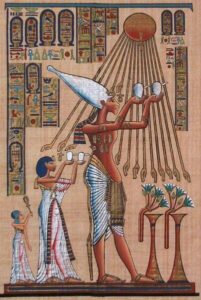
Akhenaten, the pharaoh associated with the introduction of Atenism, is often depicted in a distinctive manner in art from the Amarna Period. The representations of Akhenaten during this period show several unique features:
Artistic Style: The art of the Amarna Period deviates from traditional Egyptian artistic conventions. Akhenaten and his family are portrayed with a more naturalistic and intimate style, departing from the idealized representations seen in earlier Egyptian art.
Physical Features: Akhenaten is depicted with elongated and exaggerated features, including an elongated face, an elongated head, and a prominent chin. His physical appearance in art from this period is markedly different from the conventional representations of pharaohs.
The Royal Family: Akhenaten’s depictions often include his wife, Nefertiti, and their daughters. The family is shown in close and affectionate scenes, reflecting the personal and informal style of the art during this period.
Gender Ambiguity: Some representations of Akhenaten show a blending of male and female characteristics. He is depicted with a slender and androgynous physique, which has led to scholarly discussions about the reasons behind this artistic representation.
Sun Disc Iconography: Aten, the sun disk, is often represented in the art of the Amarna Period. It typically extends its rays with hands, reaching down to bless Akhenaten and his family. This iconography emphasizes the central role of Aten in the pharaoh’s religious reforms.
The representations of Akhenaten during the Amarna Period were a departure from traditional Egyptian artistic norms, reflecting the unique religious and cultural changes initiated by the pharaoh during his rule.
The Rise of Aten
The rise of Aten, or Atenism, refers to a significant shift in religious practices during the reign of the Egyptian pharaoh Akhenaten in the 14th century BCE. Here are key points in the rise of Aten:
Akhenaten’s Rule (1353–1336 BCE): Akhenaten, originally Amenhotep IV, ascended to the throne and initiated a series of radical religious reforms. He shifted the focus from the traditional polytheistic worship of various gods to the exclusive veneration of the sun disk, Aten.
Aten as a Sole Deity: Aten, representing the physical sun, became the central and sole deity of the new religious system. Akhenaten proclaimed Aten as the supreme god, emphasizing the concept of Aten as the universal and life-giving force.
Religious Capital at Akhetaten: Akhenaten moved the capital from Thebes to a new city called Akhetaten (modern Amarna) to establish a center for the worship of Aten. This move was part of his broader efforts to distance himself from traditional religious centers and priests.
Monotheistic Ideology: Atenism is often considered one of the earliest forms of monotheism in recorded history. The religious texts associated with Atenism, such as the “Great Hymn to the Aten,” reflect a monotheistic theology centered around Aten’s benevolence and universal presence.
Artistic Changes: The art of the Amarna Period witnessed a departure from traditional Egyptian artistic conventions. Depictions of Akhenaten and his family featured an unconventional and more naturalistic style, emphasizing intimacy and familial affection.
Resistance and Aftermath: Akhenaten’s religious reforms faced resistance from traditionalists, and his identification as the “Heretic Pharaoh” reflects the opposition to his radical agenda. After his death, his successors, notably Tutankhamun, returned to the traditional polytheistic worship of multiple gods.
Obliteration of Akhenaten’s Legacy: The succeeding pharaohs attempted to erase Akhenaten’s legacy. His name and the references to Atenism were often omitted from official records, and the temples dedicated to Aten were dismantled or repurposed.
The rise of Aten during Akhenaten’s rule had a profound but short-lived impact on Egyptian religious practices, leaving an enduring mark on the history of ancient Egypt. The subsequent pharaohs worked to restore the traditional polytheistic beliefs and erase the traces of Atenism from official records.
Akhetaten
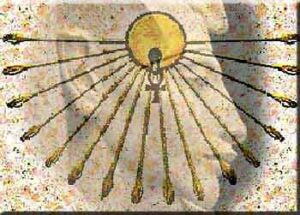
Akhetaten, also known as Amarna, was the new capital city established by the Egyptian pharaoh Akhenaten during his rule (1353–1336 BCE) in the 18th Dynasty. Here are key points about Akhetaten:
Foundation and Purpose: Akhenaten founded Akhetaten around Year 5 of his reign, and it served as the capital of Egypt during the period of Atenism, the monotheistic worship of the sun disc Aten. The city’s establishment was part of Akhenaten’s broader religious and political reforms.
Location: Akhetaten was situated on the east bank of the Nile River, midway between Thebes (modern Luxor) and Memphis (modern Cairo). The location was carefully chosen to be central and symbolically significant.
City Layout: The layout of Akhetaten was different from traditional Egyptian cities. The city was designed in an elongated and narrow shape, with the main temples and royal residences aligned along the east-west axis to capture the rays of the rising and setting sun, emphasizing the significance of Aten.
Religious Structures: Akhenaten constructed numerous temples and structures dedicated to the worship of Aten. The Great Temple of the Aten, also known as the Gempaaten, was one of the central religious structures in the city.
Residential Areas: The city included residential areas for the elite, including nobles and officials. The homes in Akhetaten were often spacious and well-designed, reflecting a departure from the traditional Egyptian architectural style.
Artistic and Architectural Innovations: The art and architecture of Akhetaten represented a departure from traditional Egyptian styles. Art during the Amarna Period featured more naturalistic depictions of the royal family and scenes of daily life.
Relocation of Capital: Akhetaten served as the capital of Egypt during Akhenaten’s rule, signaling a break from the religious and political traditions associated with Thebes. However, after Akhenaten’s death, the capital was moved back to Thebes, and Akhetaten was abandoned.
Legacy and Rediscovery: The city of Akhetaten was largely abandoned and fell into ruins after the end of Atenism. The site was later rediscovered, and archaeological excavations have provided valuable insights into the religious, political, and cultural changes during the Amarna Period.
Akhetaten stands as a unique archaeological site, offering a glimpse into the religious and cultural shifts that occurred during Akhenaten’s attempt to establish a new capital and promote Atenism as the central religious doctrine.
Aten Temples and Priests
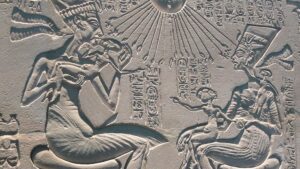
Akhenaten, during his rule, initiated the construction of Aten temples, pivotal centers for the worship of the sun disc. Skilled priests actively conducted ceremonies, promoting the monotheistic Atenism in the capital city of Akhetaten. These temples, marked by distinctive architectural features, served as focal points for the radical religious reforms, reflecting the shift from traditional polytheism to the exclusive veneration of Aten. The priests, selected for their dedication to the monotheistic ideology, played an active role in promoting Atenism, conducting rituals, and maintaining the sacred spaces. The Aten temples, embodying the essence of Akhenaten’s religious vision, stood as significant structures during the brief but impactful period of Atenism in ancient Egypt.
A Revolution in Art
The reign of Akhenaten marked a revolution in art as he actively promoted a departure from traditional Egyptian styles. Artists, influenced by the pharaoh’s vision, actively embraced naturalistic depictions, portraying the royal family with elongated features and an unprecedented intimacy. This shift in artistic expression actively reflected Akhenaten’s monotheistic ideology, with Aten, the sun disc, often featured prominently in artworks. The active exploration of new artistic styles during the Amarna Period challenged established norms, emphasizing a more dynamic and personal representation. This revolution in art, propelled by Akhenaten’s unique vision, left an indelible mark on the cultural legacy of ancient Egypt.
Aten’s Attenuation
Akhenaten actively enforced Aten’s attenuation, diminishing the influence of traditional deities. He directed the closure and defacement of temples dedicated to other gods, actively suppressing polytheistic practices. This intentional reduction of divine plurality aimed to consolidate worship solely towards Aten, the sun disc. The pharaoh actively promoted monotheism, actively erasing names of traditional deities from inscriptions and monuments. Aten’s attenuation, driven by Akhenaten’s revolutionary religious reforms, stood as a pronounced act of religious centralization during the Amarna Period.
Aten FAQ
Who is Aten?
Aten is the solar disc and a deity in ancient Egyptian religion. It represents the physical sun, often depicted as a radiant disk with extended rays. Aten gained prominence during the reign of Pharaoh Akhenaten, who initiated the religious reform known as Atenism.
What is the power of Aten?
In the context of Atenism, the power of Aten is symbolized as the life-giving force emanating from the sun. Aten was considered the singular, all-encompassing deity, embodying the energy and sustenance necessary for life on Earth. The power of Aten, as perceived in Atenism, lies in its role as the ultimate source of light, warmth, and vitality.
What is the purpose of Aten?
The purpose of Aten, as emphasized in Atenism, was to serve as the supreme and universal deity. Akhenaten promoted the worship of Aten to the exclusion of other traditional Egyptian gods. The purpose was to establish a form of monotheism, emphasizing the oneness of the divine and redirecting religious focus to Aten as the sole, benevolent force governing creation and sustaining life. Aten's purpose, within the religious framework of Atenism, was to unify worship and elevate the sun disc to a central, cosmic significance.
Is Aten male or female?
Aten is often considered a gender-neutral or androgynous deity. In the representations of Aten during the Amarna Period, it is often symbolized as a radiant sun disc with rays extending downward, devoid of anthropomorphic features typically associated with gender.
Is Aten or Ra the sun god?
Aten and Ra are both associated with the sun in ancient Egyptian religion, but they represent different aspects. Ra is traditionally considered the sun god in the Egyptian pantheon, often depicted as a falcon-headed deity. Aten gained prominence during the reign of Akhenaten, particularly through Atenism, where it was emphasized as the singular and supreme deity represented by the sun disc.
How old is Aten?
The concept of Aten as a deity has ancient roots in Egyptian religion, but its prominence and specific characterization in the form of Atenism emerged during the 18th Dynasty of the New Kingdom period, around the 14th century BCE. The worship of Aten, as directed by Akhenaten, was relatively short-lived, spanning only a few decades.
Who created the god Aten?
The god Aten was not "created" in the traditional sense. Aten was a longstanding concept in Egyptian religion, representing the sun's physical disk. The promotion of Aten to a central and exclusive deity during the reign of Akhenaten was a result of religious reforms initiated by the pharaoh rather than the creation of a new deity.
How did Aten become a god?
Aten was already recognized as a deity in Egyptian religion, representing the solar disc. However, its elevation to a central and exclusive status as the supreme god was a result of the religious reforms introduced by Pharaoh Akhenaten. Akhenaten actively promoted Aten to the exclusion of other traditional deities, initiating the monotheistic religious system known as Atenism. The sun disc, Aten, became the focal point of worship and a symbol of divine unity during this period.
